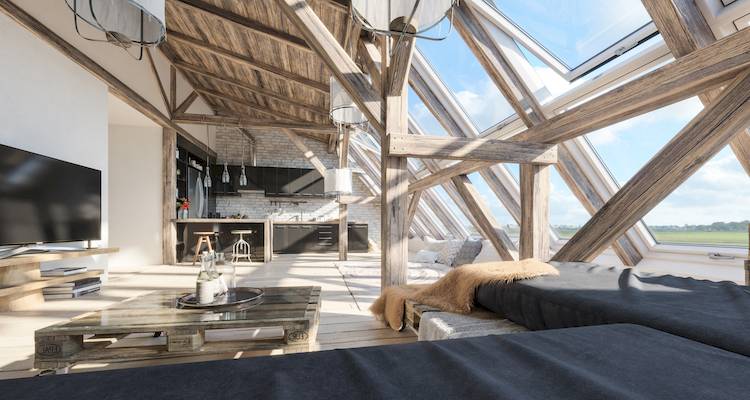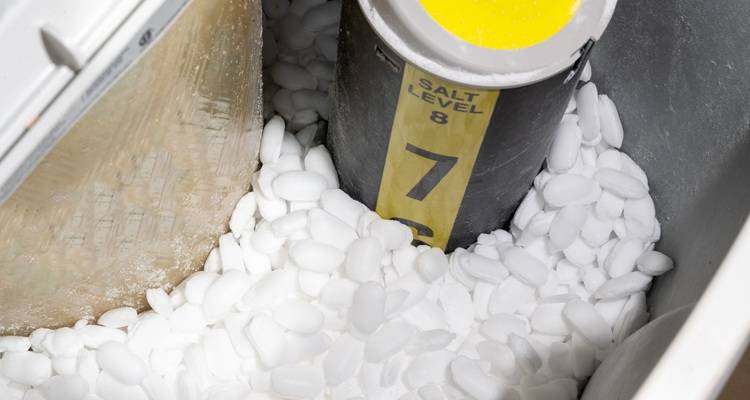Downstairs Toilet Installation Cost
- The average cost to fit a downstairs toilet is around £3,000
- The job will take approximately 7 - 10 days to complete
- A complete pricing breakdown which includes what cost factors to consider before starting and what such a task usually involves
- How long the job should approximately take, and a general overview of what kind of jobs can be performed
- How to find and hire a bathroom fitter
Want to know how much it will cost you to build a downstairs toilet?
In this comprehensive cost guide, we look at the typical prices for different types of downstairs toilet installations. From the understairs toilets to the small cloakroom toilets. We'll also cover labour fees, material costs and other key factors that may impact the overall price.
To give you a quick estimate, it will likely cost around £3,000 on average, to install a new toilet under the stairs.
Are you ready for a quote for your job?
We have a whole range of bathroom specialists ready to offer you a free quote!
Take a look at the article below for all your downstairs toilet cost information!
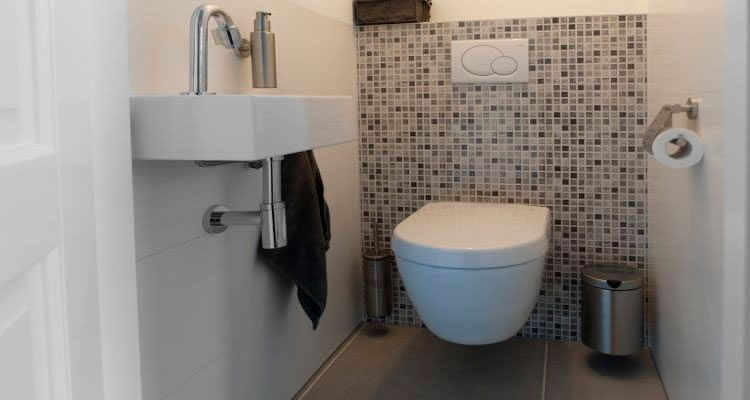
£3,000
Table of Contents
- How Much to Install a Downstairs Toilet?
- Downstairs Toilet Supply Costs
- Additional Costs
- Labour Costs and Timescales
- Cost Factors of Installing Downstairs Toilet
- What's Involved in Installing Downstairs Toilet?
- Can I Install a Downstairs Toilet Myself?
- Planning Permission for a Downstairs Toilet
- Building Regulations for a Downstairs Toilet
- What Size Space Do I Need For a Toilet?
- Space Saving Toilet Designs
- Cost of Removing a Downstairs Toilet
- Hiring Someone to Install Downstairs Toilet: Checklist
- FAQs
How Much to Install a Downstairs Toilet?
We’ve seen that the average cost to install a downstairs toilet is in the region of £2,000 - £4,000, but this is subject to a number of variables which can dramatically affect the final price.
Firstly, your white goods will be the core purchase. Some people like to install a downstairs shower or full wet-room, especially when there are elderly people residing in the property.
Still, most downstairs WCs (water closets) contain four basic components:
- A Sink
- A Toilet
- A Radiator
- An Extractor Fan or Window
Nowadays, there is an extensive range of sinks and toilets, from the old-fashioned, floor-standing toilet with a raised cistern and pull-down flush chain, to hyper-modern floating toilets with small or inset cisterns.
Likewise, with sinks – they come attached to the wall, on a pedestal, attached to vanity units. With these, you also have the inevitable range of finishes, from very basic to super luxury.
More variables affecting the cost are the size of the downstairs toilet you’re installing, where it’s being installed (more challenging access raises the price), what your extras are costing (radiator, towel rail, floor covering etc.), and which contractors you choose.
Then, of course, the more things that need installing, the longer the job will take, which will add to your labour costs. So, as you can see, there are lots of variables which can take your downstairs toilet from budget-friendly to quite the extravagance.
I have a lot of space under my stairs, which I’m currently using as storage; however, I have no downstairs toilet. How much would it cost to put a toilet under my stairs, and how long would it take?
Downstairs Toilet Installation Prices
If you want to budget for installing a downstairs toilet, you’ll want to consider six things:
- Types of work involved (plumbing, building, carpentry, electrics, plastering).
- Materials (flooring, tiling, stud walling, wallpaper).
- Decorations and small items (taps, lights, mirrors, towel hanger, shelving).
- Large items (toilet, sink, cupboards, radiator).
- Quality of finish you require – are you more interested in saving money with a basic specification installation, or enjoying the luxury of a high-end specification?
- Finally, how much of the work are you able and willing to complete yourself?
The minimum recommended size for a downstairs toilet is 0.8m x 1.4m (1.12 m² ) – this would be just enough room for a toilet and a small sink, and the door would have to open outwards. For ease of calculations, the prices below are based on a floor space of 1.5 m², or a 0.8 x 1.85m room.
When calculating wall area, this is based upon a rectangular room with two walls at 2m high x 0.8m wide, and two walls at 2m high and 1.85m wide. For ease of calculations, the wall coverings below are based on a wall space of 10.5 m².
| Job Description | Labour | Materials | Total (rounded) |
|---|---|---|---|
| Stud partition walls |
£250 - £525
(Joiner – 2 to 3 days) |
£90 - £100 (4m² wall) |
£345 - £625 |
| Wallpaper |
£300 - £400 (Painter and decorator – 2 days) |
£36 - £66
(3 rolls) |
£336 - £466 |
| Paint & painting |
£150 - £400
(Painter and decorator – 1 to 2 days) |
£20 - £50
(2 litres) |
£170 - £450 |
| Fully tiled walls |
£450 - £600 (Tiler – 3 days) |
£105 - £3950
(10.5m² wall) |
£555 - £4,550 |
| Tiled floor |
£300 - £600
(Tiler – 2 to 3 days) |
£13.5 - £345
(1.5m² floor) |
£314 - £945 |
| Wood flooring |
£300 - £400
(Floor fitter – 2 days) |
£45 - £90
(1.5m² floor) |
£345 - £490 |
| Laminate flooring |
£300 - £400
(Floor fitter – 2 days) |
£22.5 - £52.5
(1.5m² floor) |
£323 - £453 |
| Carpeted floor |
£150 - £200
(Floor fitter – 1 day) |
£9 - £45
(1.5m² floor) |
£159 - £245 |
| uPVC window |
£100 for one window
(Window fitter – 1 day) |
£75 - £150
(one small window) |
£175 - £250 |
| Plastering |
£100 - £300
(Plasterer -1 day) |
Plaster should be
included in the cost |
£100 - £300 |
Downstairs Toilet Supply Costs
If you’re thinking of installing the downstairs toilet yourself, you'll need to purchase a few items to install it in the room. The basics for a downstairs toilet are a toilet, a sink, tiles and flooring. You will also need to purchase taps to affix to your basin.
| Low specification | Medium specification | High specification | |
|---|---|---|---|
| Sink | £42 | £150 | £270 |
| Tap(s) | £27 | £250 | £420 |
| Toilet | £65 | £750 | £1,530 |
| Tiles – wall | £10/m² | £115 | £395/ m² |
| Porcelain / ceramic / stone / slate tiles | £10/m² | £110/m² | £230/m² |
| Vinyl tiles | £9/m² | £25/m² | £40/m² |
| Polished concrete | £50/m² | £100/m² | £150/m² |
| Rubber flooring | £30/m² | £50/m² | £70/m² |
| Engineered wood | £30/m² | £45/m² | £60/m² |
| Laminate flooring | £15m² | £25m² | £35/m² |
| Carpet | £6m² | £18m² | £30/m² |
Additional Costs
Whilst the basics of your downstairs WC may be the toilet itself and a sink, there are many other items you may wish to add to complete your room.
If you have the space, adding a bath and/or shower to the room gives you an extra option if you have a big family trying to get ready in the morning.
The bath itself will cost £70 - £1,200 and a shower (the enclosure plus the shower itself) will cost between £200 and £1,400.
If you’re short on space, there is the option of installing a shower unit over a bath, or a walk-in shower bath – the latter costs between £1,500 and £2,000.
Heating
There are two basic types of heating available for use in a downstairs toilet:
- A Standard Radiator
- Underfloor Heating
A standard radiator costs on average £40 depending on size and type, although the size needed for a downstairs WC is likely to be smaller and therefore relatively cheap.
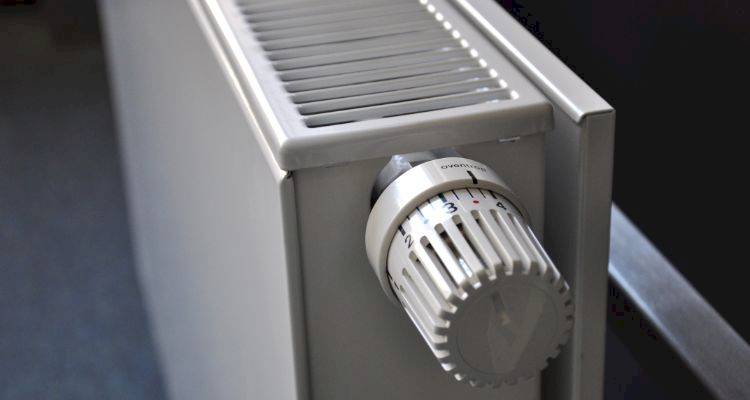
On the other hand, installing underfloor heating will likely cost around £800; however, if the rest of your downstairs has underfloor heating, this will mean no substantial temperature changes between rooms.
One benefit of underfloor heating is that it doesn’t get dusty and then ‘bake’ the dust like radiators do, which often lends the air a stale feel. If underfloor heating sounds like a good option, take a look here at some more information.
Air flow
Bathrooms can get steamy, sweaty and smelly; three excellent reasons to have good airflow! If you have a window in the room, this is the best option as it is free to use and offers additional light. A small double-glazed window will cost approximately £150, but if you’re unable to have a window in the downstairs toilet, an extractor fan is the next best thing.
It costs on average £300 to have someone supply and fit an extractor fan, but it’s worth it to save the rest of your house from potential damp patches. For more information about whether an extractor fan is suitable for you, and whether it fits your budget, take a look at our page here.
Accessories
The finishing touches to your bathroom are likely the little extras that make it personalised to your needs. Things such as a towel rail, a small shelf, a cabinet, a light fitting or a shaving plug.
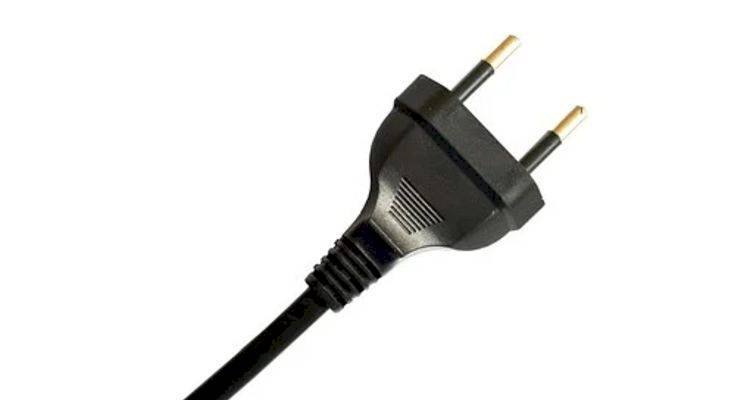
| Item | Lowest cost | Highest cost |
|---|---|---|
| Hand towel rail/ring | £7 | £35 |
| Bathroom shelf | £6 | £25 |
| Bathroom cabinet | £22 | £250 |
| Light fitting | £10 | £104 |
| Shaving plug | £3 | £27 |
| Extractor fan | £12 | £99 |
It should be noted that any lights must be suitable for bathrooms due to the possibility of steam getting into the electrics.
I need a quote for installing a toilet in an under-stairs room. How much would this cost?
Labour Costs and Timescales
A lot of the labour costs for your downstairs WC project will depend on the size of your bathroom. Tiling, flooring and painting work will inevitably cost more the bigger the area they have to cover. However, some items, such as the installation of your toilet and sink, may have a fixed cost, as most will take approximately the same time to install.
You can save on costs by having a multi-skilled labourer (e.g. a specialist bathroom fitter) complete the work (in which case they may quote you for the entire job rather than per item). Alternatively, you can save time by having multiple labourers working on different jobs at the same time.
In the table below, you can see how much a labourer will charge for completing each separate item in your downstairs toilet. It should be noted, though, that a skilled plumber will be able to complete the pipework required for your toilet, sink (and shower, if needed) in one go, before installing the full bathroom suite.
If you hire a qualified bathroom fitter, who will either be able to complete all the labour work themselves or will have a team who can complete the work, they will take around 7 – 10 days to do the work.
Whoever completes the work for you will give you a quote for their part of the job, and will discuss any further costs with you as they arrive.
When planning your work and estimating how long it will take, remember to allow for jobs which must be run consecutively (e.g. plastering before tiling), as well as those which can be done simultaneously (installing the toilet and sink). It’s always best to allow time for unexpected issues to arise, as they almost always do!
| Installation item | Labour cost | Duration |
|---|---|---|
| Double-glazed window | £200 - £250 | 1 day |
| Sink and toilet | £300 - £400 | 1 to 2 days |
| Shower | £150-£200 | 1 day |
| Extractor fan | £190 – £220 | 2 to 4 hours |
| Radiator | £250 - £300 | 3 to 4 hours |
| Accessories | £50 - £150 | 1 to 2 hours |
| Lay underfloor heating | £200 - £250 | 1 to 2 days |
| Lay flooring | £150 - £300 | 1 to 2 days |
| Tile walls | £200 - £300 | 2 days |
Cost Factors of Installing Downstairs Toilet
Aside from your two key costs – materials and labour – there can be many additional expenses which may arise during this project, or even add to your quotes before you’ve even started work.
Your Location
The location of your property could have a significant impact on your budget. If you live in the middle of nowhere, this will likely add to your bill as labourers will need to travel further to complete the job, and will have to get their supplies from further away.
Age of Your Property
Likewise, if you have outdated/challenging plumbing (e.g. a sewage tank), a plumber may need to bring in extra materials or make additional visits to your property to complete the job. If you live in an older property, you may have walls made of solid concrete, or even wattle and daub – this will affect the costs of installing your pipework, electrics and windows/fans.
There may also be limitations if fitting your downstairs toilet in a listed building. In this case, and many others, there may also be limited access to the room, which may impact the amount you are charged.
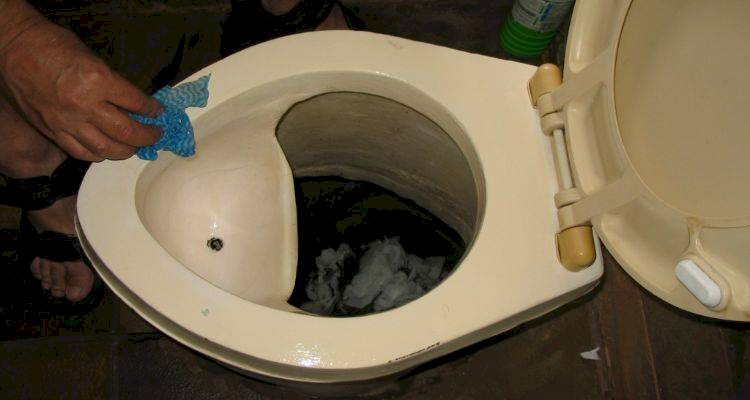
Waste Disposal
There will always be a need for waste disposal in a job like this. Even if you already had an empty room that just needed altering, you are going to end up with bits of pipes, packaging, chunks of plaster, broken tiles, etc.
It will be your builder who will assess how much waste there is likely to be, and he will discuss with you the best means of disposal – usually a skip. This will cost between £60 and £100 depending on the size required.
Room Decoration
If you’re not tiling your walls or having only partial tiling, you will likely want to decorate the rest of the room with either paint or wallpaper. A painter and decorator will often charge £150 - £200 for the day, and depending on the size of the room, it could take 2 – 3 days. You will also need to factor in the cost of the paint or wallpaper.
Unexpected Issues
Your labourers may come across an issue you’re unaware of, and this may impact not only the cost of your project but also the timeline. Coming across a broken or damaged pipe, cracked brickwork, or leaking drains will result in delays and further costs.
Building Regulation Checks
Finally, check the building regulations for your particular project in your house. Installing a downstairs toilet will usually add to the price of your home, but without a building regulation completion certificate, you will find your property hard to sell. To prevent these kinds of issues, contact your local council for more information.
What's Involved in Installing Downstairs Toilet?
Installing a downstairs toilet can be as simple or complicated as you make it. A simple downstairs WC tends to be a toilet, a sink, a mirror, a radiator/heated towel rail and a window or extractor fan. Some also have a cabinet above or below the sink. To complete this job, your bathroom fitter will perform the following steps:
- Your bathroom fitter will inspect the current plumbing and drainage in your house, as well as that near the prospective bathroom. He will also identify what kind of boiler/hot water system you use. These will give him a good idea of how he will lay the pipes around your property and also help him draft up a quote for the work.
- Any existing flooring and wall coverings will be removed (e.g. old tiles or wallpaper), as well as any existing fixtures and fittings (e.g. electrical sockets).
- Next, if no light fitting exists in the room, your electrician will ascertain the best place and add the wiring.
- If you need a new window put in, or an extractor fan, your builder may well do it at this stage, both to create the least mess at the start, and also to provide extra light and ventilation when he completes the rest of the work.
- Hot and cold water pipes will then be run under the floorboards to where your toilet and sink will be. If you have a cast-iron soil pipe, at this point, your plumber will replace all or part of it with a plastic section to allow him to connect the new toilet waste pipe to it.
- Your walls will now be prepared – if they are in good condition, they may not need any work, but some walls may need insulating, then installing plasterboards, skimming with plaster and then painting. At this point, a joiner will add any woodwork required, such as your door/door frame and skirting boards.
- Your plumber will now install your basin and toilet and connect them up to the drainage pipes. He will also install a small radiator or heated towel rail at this point.
- A tiler will now come in and tile your walls and/or floor, and any bathroom cabinets or accessories will likely also be attached at this point.
The exact order of these tasks will depend on how many labourers you have, and whether they are multi-skilled, as well as any existing electric or water supply to that part of the house.
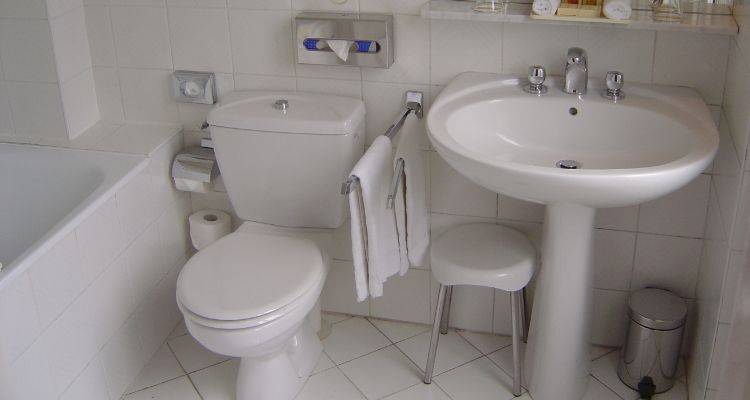
It may be that your window is put in before anything else if the weather looks good, but your plaster may need longer to dry out if the weather is humid.
Can I Install a Downstairs Toilet Myself?
Installing a downstairs toilet is a relatively straightforward DIY job, but that’s not to say it is simple! You will need to be confident with all the relevant parts of the job – joinery, plumbing, electrics, plastering, tiling, etc. – or willing to call in specialists for some parts of the job.
There are some aspects where a skilled labourer is going to save you a lot of time and heartache – for instance, rerouting a soil pipe or adding hot and cold water feeds, and for safety reasons, hiring an electrician will always be money well spent.
If you intend to do the job yourself, it is worth noting that while you are working, this room is going to require both water and electricity – a pairing which doesn’t work well together. There shouldn’t be electrical sockets in a bathroom unless a specifically fused shaver socket, and any lighting must be suitable for a damp atmosphere.
One thing you will need to do is seek the guidance of a building inspector. There may be aspects of the build that need signing off (e.g. specialist electrical work). The building inspector will only give you a completion certificate if this work has gone through the required channels and met the legal obligations.
Planning Permission for a Downstairs Toilet
Planning permissions are rarely needed for a downstairs toilet as it will be staying within the original footprint of the house (this comes under the Permitted Development Rights).
You will only need planning permission if the toilet were to be an extension of the property, or if you live in a conservation area or a listed building. If you’re not sure whether you’d need planning permission, you’d best check online.
If you think you do require planning permission, you will need to contact your local planning authority. You will then be able to apply for planning permission online at the cost of around £200.
Building Regulations for a Downstairs Toilet
Building regulations are there to ensure that any work carried out on your property is safe and provides a healthy environment for you, your co-residents, and your neighbours. This reaches from merely ensuring that the walls are stable and won’t fall down, to making sure they are adequately noise-proof.
With regards to a downstairs toilet, a buildings inspector will want to ensure that your building work (if any) is sound, that you have adequate ventilation in the room, that there are no toxic substances used, that the work provides the correct method of waste disposal, that any window installed has the right glazing, and that the room is resistant to contaminants.
You may also find that a downstairs toilet has the requirement to be fully wheelchair accessible, but this is currently down to each local planning authority.
To comply with building regulations, you will need to contact a building control body, which can be your local authority or a private approved inspector. Whichever route you choose, the costs will vary between authorities and private inspectors, but will usually include a deposit, an inspection charge, and a full building notice charge. This could cost up to £750 in total.
What Size Space Do I Need For a Toilet?
You can put a downstairs toilet in a surprisingly small space. In fact, many opt to put a toilet under the stairs! The minimum space for a toilet you will need is 70cm wide by 130cm long, but this would function without comfort. Allowing 80cm x 140 gives you a bit more room to move.
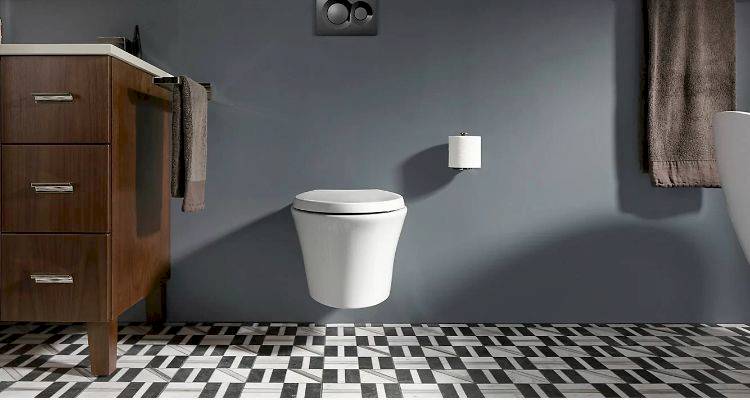
There is a huge range of bathroom items available for fitting into tiny spaces, so although you’ll need to think small, you’ll have a big choice.
Space Saving Toilet Designs
Toilets come in a lot of different styles, but if you want to take up minimal space, consider one of the following:
- Wall Hung Toilets
- Back to Wall Toilets
- Short Projection Toilets
- Corner Toilets
- Toilet Sink Combination Unit
Let's take a look in more detail.
Toilets which have their back to the wall, hang from the wall, and these take up very little space. However, there will need to be room behind that wall to place the hidden cistern. A back to wall or wall-hung toilet costs between £100 and £450.
A suitable space-saver is a close-coupled toilet – that is, one with a small cistern attached directly behind the toilet seat. Some come as ‘short projection’, meaning the distance between the front of the pan and the wall is minimal, and some are ‘fully shrouded,’ meaning there is no gap behind the toilet for the unsightly soil pipe.
A standard close-coupled toilet will cost between £45 and £350, with short projection ones costing between £160 and £270. A fully shrouded toilet will cost you £140 - £175.
You can also get a diagonal toilet, which will fit neatly into a corner – this can be a great space saver. These cost £150 - £200.
Combination Toilets
Finally, you could get one of the two kinds of combination toilets. Firstly, you can get one with a sink over the top of the cistern. This means you need only accommodate the footprint of the toilet.
You would also need to consider the surrounding space to ensure you don’t have to straddle the toilet to wash your hands! These cost between £185 and £350.
The second type is an all-in-one toilet which comprises a basin, toilet and cupboard, all in one small unit. These come in sizes as small as 90cm wide and 40cm front to back and cost £250 - £380.
Sink & Pedestal Options
If you do not want a combination sink and toilet, you’ll need a separate basin. Again, these come in different styles, suitable for varying shapes and styles of downstairs WC.
- Firstly, you have a classic pedestal basin. These don’t have any specific space-saving features, but they have a small footprint, and you can find ones with a smaller bowl. These cost between £30 and £250.
- An alternative is a cloakroom basin, which attaches to the wall. These tend to be very compact and designed to fit tight spaces. You can get narrow ones, short ones and also diagonal ones made to fit a tight corner. A cloakroom basin costs between £38 and £90.
- If you’d like some extra storage space, you could opt for a cupboard or countertop basin. These can be very narrow and fit into small spaces. You can buy the two items separately (a countertop basin and a separate cupboard), but a combined, small unit will cost between £100 and £600—a countertop basin on its own costs between £30 and £250.
Cost of Removing a Downstairs Toilet
We've seen that a downstairs toilet can add value to your property, as well as give access to the necessities for people with reduced mobility. However, what happens if you wish to relocate your downstairs toilet, or remove it entirely?
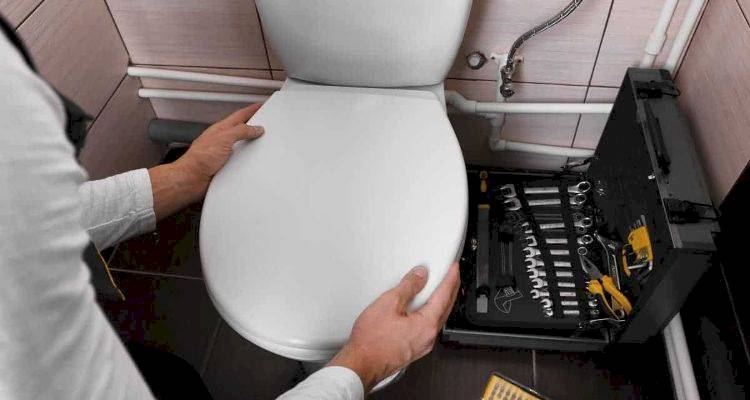
Firstly, it should be noted that this work can be done by a non-professional, just as a bathroom can be installed by a non-professional. However, the same warnings apply: you’ll be working with water and electricity, which shouldn’t mix!
If you’re in any doubt, you should call in a plumber to ensure your pipes (especially your soil pipe) are sealed, your water is redirected, and your radiator is removed (if required); you may also need an electrician to remove an electric shower.
Other than that, it will mostly be removing the bathroom suite and getting rid of it. If you want to hire a professional to complete the job for you, they will charge a standard day rate. A bathroom fitter who can do plumbing and electrics will probably be able to completely dismantle your downstairs toilet within a day, at the cost of £150 - £250.
If you have hired a professional to do the job for you, they should have anticipated the waste and planned for its disposal. However, if you are doing it yourself, you will need to consider your options.
If you want to hire a skip, this will cost you around £60 for a small one. Depending on whether you are removing floor tiles, wall tiles and lots of accessories, as well as your toilet and basin, this is likely to be big enough.
Alternatively, you can remove the waste yourself, either taking it in the back of a car or by hiring a van. Van hire will cost you between £55 and £75 for a day, plus any petrol you use.
With either of these methods, you’ll be able to take your waste to your local recycling centre, where someone will guide you on how to dispose of your items into the correct areas.
You may need to do some research before you set off, as some household recycling centres don’t accept vans, and some may charge a set fee for disposal of rubble and larger items such as toilets. These fees are usually between £5 and £25 per item or dumpy bag.
Hiring Someone to Install Downstairs Toilet: Checklist
If you’re looking to hire a professional bathroom fitter to complete this job for you, here are some things you’ll need to complete or consider:
- Get quotes from at least three firms
- Check whether those companies have any industry-related qualifications
- Check whether your electrician is accredited by the National Inspection Council for Electrical Installation Contracting NICEIC).
- Check whether your plumber is accredited or registered with the Association of Plumbing and Heating Contractors (APHC) and/or the Chartered Institute of Plumbing and Heating Engineers (CIPHE).
- Ask to see references from previous employees
- Ask to see samples of their previous work
- Get a written quote, broken down if possible, and itemised.
- Check their warranty and guarantee policies
- Check whether they do a deposit guarantee and whether they have insurance
FAQs
How much value does a downstairs toilet add to a property?
Can I only install a downstairs toilet in a room that already has water access?
There may, however, be areas which would be expensive or challenging to run pipes to, but your plumber will give you advice in this case.
Can I install my downstairs toilet anywhere?
Should I do the plumbing and electrical work myself?
How do I plan my downstairs bathroom?
If you have a good idea of what you want but aren’t confident about the details, you can go to a bathroom specialist for advice. Some will help you design a room free of charge, or give you advice on your current plans. Additionally, use your professionals as they will be very experienced.
If you’re hiring a bathroom fitter, go through your plans with them and get their thoughts. A good contractor will always come to you if they envisage any problems – and the best ones will help you solve the issue too.





